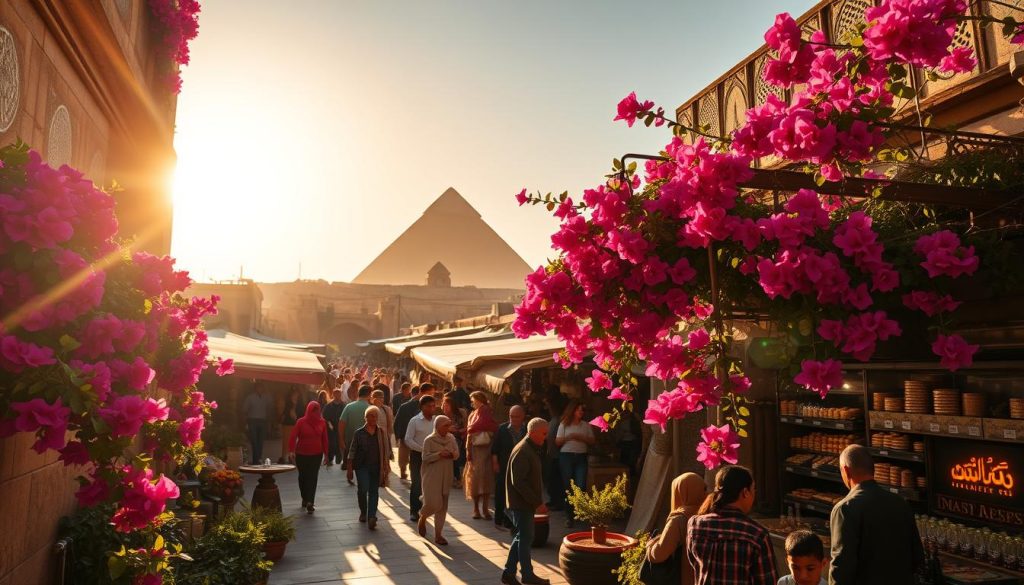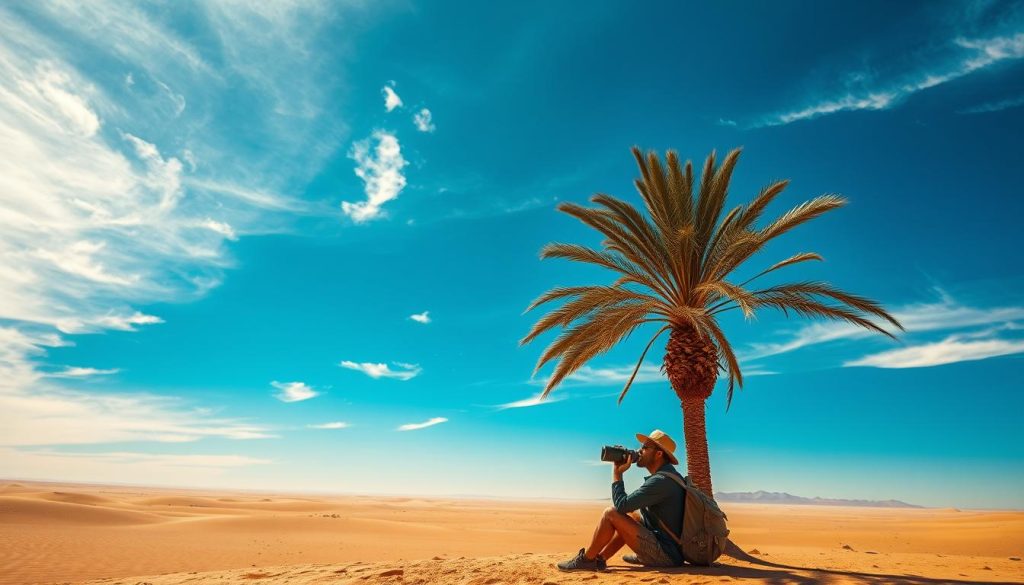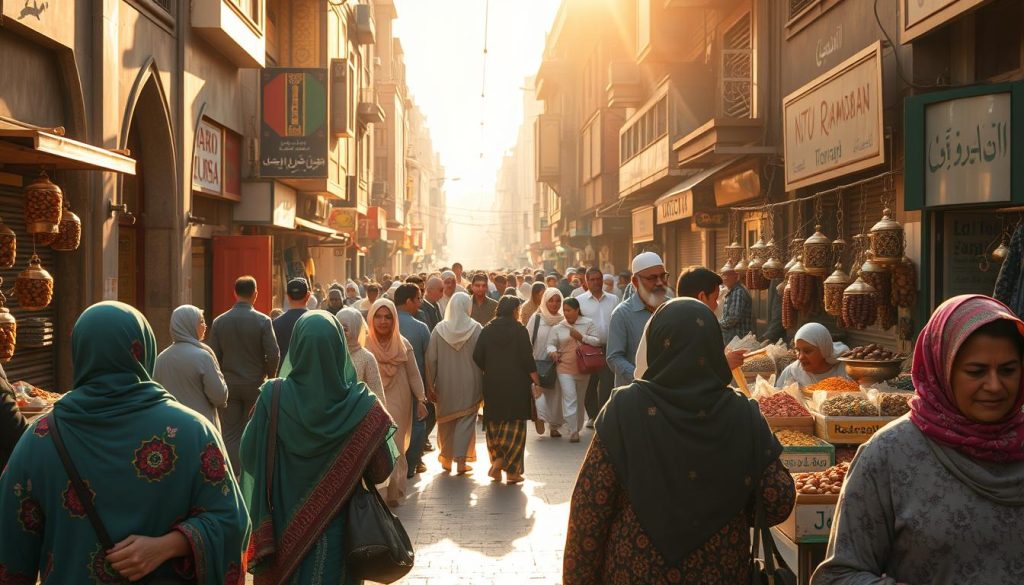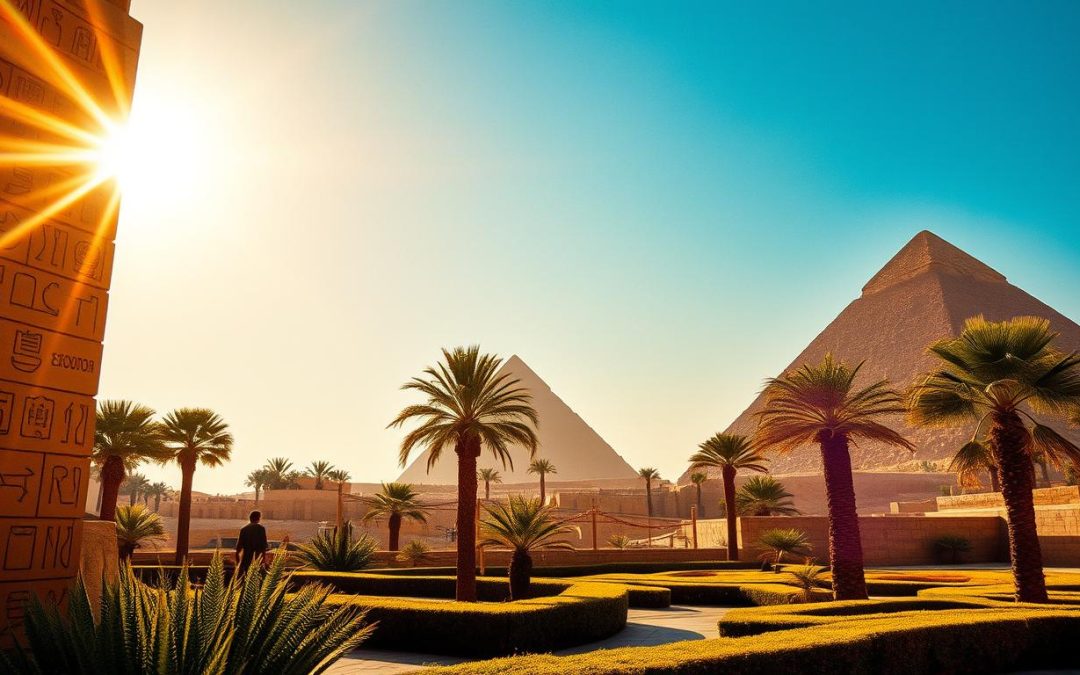Have you ever wondered why timing is everything when planning your next adventure? When it comes to exploring a destination like Egypt, the weather plays a pivotal role in shaping your experience. From the iconic pyramids to the serene Nile River, every landmark and activity is influenced by seasonal patterns.
This guide will help you navigate the ideal time to visit Egypt, ensuring you avoid extreme heat and crowds. Whether you’re dreaming of ancient temples, desert excursions, or coastal relaxation, understanding the climate is key to a seamless journey. Let’s dive into practical insights and expert tips to make your trip unforgettable.
Key Takeaways
- Weather significantly impacts your travel experience in Egypt.
- Fall, winter, and early spring are the most comfortable seasons to visit.
- Ancient landmarks and outdoor activities are best enjoyed in mild weather.
- Understanding temperature trends helps avoid extreme heat.
- Planning ahead ensures a smoother and more enjoyable trip.
Understanding Egypt’s Climate Patterns
Understanding the climate is essential for planning a smooth trip to this historic destination. The weather here varies significantly by season and region, making it important to know what to expect before you go.
Overview of Seasonal Changes
The climate is divided into distinct seasons, each offering a unique experience. Winters are mild, with average temperatures in Cairo around 68°F. Summers, however, can be scorching, especially in the south, where temperatures often exceed 104°F.
Spring and fall bring moderate weather, making them ideal for exploring ancient landmarks and enjoying outdoor activities. These transitional seasons are often considered the best time visit for a comfortable journey.
Regional Differences Explained
The north, including Alexandria, enjoys a Mediterranean climate with cooler winters and mild summers. In contrast, southern regions like Luxor and Aswan experience extreme desert heat, with summer temperatures soaring above 100°F.
Coastal areas along the Red Sea offer a different experience, with warm waters and breezy evenings. These regional contrasts mean your travel plans should adapt based on where you’re headed.
By understanding these patterns, you can choose the right season and region for your adventure, ensuring a memorable and enjoyable trip.
Optimal Months for Outdoor Adventures in Egypt
Timing your outdoor adventures can make or break your experience in this historic destination. The weather plays a crucial role in ensuring you enjoy every moment of your journey. From exploring ancient landmarks to embarking on desert safaris, choosing the right time is essential.
October to April is the ideal period for outdoor activities. During these months, the temperature is moderate, making it comfortable to visit archaeological sites or engage in desert excursions. Spring and fall, in particular, offer the perfect balance of warmth and coolness.
| Month | Average High (°F) | Average Low (°F) |
|---|---|---|
| October | 85 | 68 |
| November | 77 | 59 |
| December | 69 | 50 |
| January | 66 | 48 |
| February | 69 | 50 |
| March | 74 | 54 |
| April | 83 | 61 |
During hotter periods, plan your outings for early mornings or late afternoons. This helps you avoid the intense midday heat while still enjoying the sights. Staying hydrated and wearing weather-appropriate clothing are also key to staying comfortable.
By aligning your plans with these insights, you can fully embrace the historical sites and natural wonders without the burden of extreme temperatures. Make the most of your adventure by choosing the right time and preparing for the weather conditions.
What to Expect During Egypt’s Peak Season
Planning your trip during peak season? Here’s what you need to know. December and January are the most popular months to visit Egypt, thanks to pleasant weather and comfortable temperatures. However, this popularity comes with its own set of challenges.

During these months, attractions like the pyramids and the desert landscapes are bustling with tourists. Cities such as Cairo see a significant increase in visitors, leading to higher accommodation and tour prices. If you’re planning to travel during this time, booking in advance is essential to secure your spot and avoid last-minute price hikes.
For a more relaxed experience, consider exploring less crowded times. While the weather might not be as mild, you’ll enjoy shorter lines and a more intimate connection with the historic sites. Balancing your desire for good weather with the challenges of high season can make your trip more enjoyable.
Here are a few tips to navigate peak season:
- Book accommodations and tours early to lock in better rates.
- Visit popular sites early in the morning or late in the afternoon to avoid crowds.
- Explore lesser-known destinations for a quieter experience.
By planning ahead and staying flexible, you can make the most of your journey during this busy but rewarding time.
Insights Into Northern Coast Weather: Alexandria & Beyond
The northern coast is a hidden gem for travelers seeking mild weather and scenic beauty. Its Mediterranean climate creates a refreshing contrast to the desert heat found elsewhere. This region is perfect for those who want to combine historical exploration with beach relaxation.
Mediterranean Influences
Alexandria and the surrounding areas benefit from Mediterranean weather patterns. Summers are warm but not extreme, with average highs around 86°F. Winters are mild, with temperatures rarely dropping below 50°F. This makes it a comfortable destination year-round.
The sea breeze adds to the pleasant atmosphere, especially during the hotter months. Whether you’re strolling along the Corniche or exploring ancient ruins, the climate ensures a pleasant day for outdoor activities.
Seasonal Sea Temperature Trends
The sea temperatures along the northern coast vary by season. In January, the average sea temperature is around 59°F, making it cooler for swimming. By July, it warms up to 80°F, ideal for water-based activities.
Here’s a quick overview of sea temperatures by month:
- January: 59°F
- April: 66°F
- July: 80°F
- October: 73°F
These trends make the northern coast a popular spot for beachgoers and water sports enthusiasts. Planning your visit during warmer months ensures you can fully enjoy the coastal attractions.
The Mediterranean climate also supports a thriving tourism industry. Local businesses cater to visitors with a mix of cultural and recreational activities. From exploring the Nile Delta to relaxing on pristine beaches, there’s something for everyone.
For travelers seeking a balanced experience, the northern coast offers the best of both worlds. Schedule your trip during months with optimal day temperatures and calm seas to make the most of your journey.
Experiencing the Magic of the Nile and Cairo’s Climate
Exploring the Nile and Cairo during winter offers a unique blend of comfort and culture. With daytime temperatures averaging around 68°F, this season is perfect for uncovering ancient wonders and enjoying outdoor activities. Whether you’re touring historic temples or strolling through bustling bazaars, the mild weather enhances every experience.
Comfortable Winter Explorations
Winter is the best time to visit iconic sites like the Karnak temple complex and the Valley of the Kings. The cooler climate makes it easier to explore these landmarks without the discomfort of extreme heat. Early mornings and late afternoons are particularly pleasant for outdoor adventures.
In Cairo, the Egyptian Museum and the Pyramids of Giza are must-see attractions. The mild weather allows you to spend more time soaking in the history and culture. For a unique experience, consider a walk through Khan El Khalili Bazaar, where the winter breeze adds to the charm.
Cultural Insights from Local Weather
The winter months also coincide with cultural celebrations and events. From Christmas concerts to New Year’s Eve fireworks, there’s always something happening. These events provide a deeper understanding of the local culture and traditions.
For those planning a trip during summer, it’s still possible to enjoy the sights by scheduling activities during cooler parts of the day. Early morning temple tours or evening Nile cruises can help you beat the heat while making the most of your journey.
Here are some practical tips for planning your winter trip:
- Book temple tours and accommodations in advance to secure the best time slots.
- Pack layers to stay comfortable during cooler mornings and evenings.
- Explore lesser-known sites to avoid crowds and enjoy a more intimate experience.
By aligning your itinerary with the mild winter climate, you can fully embrace the magic of the Nile and Cairo. Whether you’re a history enthusiast or a culture seeker, this season offers the perfect balance of comfort and discovery.
Traveler Tips for Avoiding the Desert Heat
Exploring desert regions like Luxor requires smart planning to beat the heat. The scorching sun can make outdoor activities challenging, but with the right strategies, you can enjoy your adventure comfortably. Here’s a guide to help you stay cool and safe.

Early Morning Sightseeing Tricks
Start your day early to make the most of cooler temperatures. In Luxor, the morning hours are perfect for visiting iconic sites like the Valley of the Kings. By starting at sunrise, you’ll avoid the intense midday heat and enjoy a more peaceful experience.
Plan your itinerary to include outdoor activities before 10 a.m. This approach allows you to explore comfortably while maximizing your time. Afternoons can be reserved for indoor attractions or relaxing by the sea.
Hydration and Sun Protection Strategies
Staying hydrated is crucial in desert climates. Carry a reusable water bottle and drink regularly, even if you don’t feel thirsty. Dehydration can sneak up quickly, so make it a habit to sip water throughout the day.
Sun protection is equally important. Wear a wide-brimmed hat, sunglasses, and lightweight, long-sleeved clothing. Apply sunscreen with a high SPF every two hours, especially if you’re near the sea or in open areas.
Here are some additional tips to beat the heat:
- Take breaks in shaded areas or air-conditioned spaces during the hottest hours.
- Use a cooling towel or misting fan to stay refreshed.
- Opt for light, breathable fabrics that wick away sweat.
By following this guide, you can explore Luxor and other desert regions without compromising your comfort. Stay prepared, stay safe, and enjoy every moment of your journey.
A Closer Look at Upper Egypt Weather Conditions
Upper Egypt’s weather can significantly shape your travel experience, especially in cities like Luxor and Aswan. The region is known for its extreme heat during summer, with temperatures often exceeding 104°F. This makes planning your trip during the right season crucial for comfort and enjoyment.
From May to September, the heat can be intense, making outdoor activities challenging. If you’re visiting during these months, plan your excursions for early mornings or late evenings. Staying hydrated and wearing lightweight, breathable clothing are essential to staying safe.
For a more pleasant experience, consider traveling between February and April or September to November. These shoulder months offer milder temperatures, ranging from 68°F to 85°F, making it easier to explore iconic sites like the Valley of the Kings or Karnak Temple.
Here’s a breakdown of average temperatures in Upper Egypt:
| Month | Average High (°F) | Average Low (°F) |
|---|---|---|
| February | 77 | 50 |
| March | 85 | 59 |
| April | 95 | 68 |
| September | 99 | 73 |
| October | 91 | 66 |
| November | 81 | 55 |
When planning your trip, keep in mind the key differences between Upper Egypt and other regions. Unlike the Mediterranean climate of the north or the coastal breezes of the Red Sea, Upper Egypt’s desert climate is drier and hotter. This means you’ll need to adapt your itinerary and packing list accordingly.
Here are some practical tips for exploring Upper Egypt:
- Carry a reusable water bottle and drink regularly to stay hydrated.
- Wear a wide-brimmed hat, sunglasses, and sunscreen for sun protection.
- Plan outdoor activities for cooler parts of the day to avoid the midday heat.
By understanding the weather patterns and planning ahead, you can make the most of your trip to Upper Egypt. Whether you’re exploring ancient temples or cruising the Nile, the right timing ensures a comfortable and memorable journey.
Diving Into the Best Months for Red Sea Resorts
The Red Sea offers a unique escape for travelers seeking both relaxation and adventure. Despite the intense inland heat, coastal areas like Hurghada and Sharm El Sheikh maintain a refreshing climate. This makes them ideal destinations for those looking to enjoy the water and explore vibrant marine life.
Water Temperature Benefits
The Red Sea’s water temperatures are perfect for swimming, snorkeling, and scuba diving. From May to September, the sea averages 77°F to 86°F, creating comfortable conditions for underwater activities. Even in cooler months, the water remains inviting, rarely dropping below 68°F.
Here’s a breakdown of average sea temperatures by month:
- May: 77°F
- July: 86°F
- September: 82°F
- November: 73°F
These conditions attract tourists from around the world, especially during summer. The warm waters and clear visibility make it a paradise for divers and snorkelers. Whether you’re a beginner or an experienced diver, the Red Sea offers something for everyone.
Tourist Activity and Planning Tips
Summer is the peak season for tourist activity in the Red Sea region. Resorts and dive centers are bustling with visitors eager to enjoy the coastal charm. To secure your spot, it’s wise to book accommodations and excursions well in advance.
Here are some strategies to make the most of your trip:
- Plan your visit between May and September for the warmest water temperatures.
- Book diving or snorkeling tours early to avoid last-minute availability issues.
- Explore less crowded beaches or dive sites for a more intimate experience.
The Red Sea’s unique combination of mild coastal weather and vibrant marine life makes it a standout destination. Whether you’re seeking adventure or relaxation, this region promises an unforgettable summer getaway.
Seasonal Variations: When to Book a Nile Cruise
Choosing the right time for a Nile cruise can transform your journey into an unforgettable experience. The river’s serene beauty and historic sites are best enjoyed when the weather is mild and the sun is gentle. Planning your trip during the optimal months ensures you make the most of every hour on the water.
Ideal Temperature Ranges
October to April is the prime period for a Nile cruise. During these months, temperatures range from 68°F to 86°F, creating comfortable conditions for exploring. The cooler mornings and evenings are perfect for on-deck relaxation, while the midday sun is ideal for shore excursions to iconic sites like Luxor and Aswan.
Here’s a breakdown of average temperatures during peak cruise season:
| Month | Average High (°F) | Average Low (°F) |
|---|---|---|
| October | 85 | 68 |
| November | 77 | 59 |
| December | 69 | 50 |
| January | 66 | 48 |
| February | 69 | 50 |
| March | 74 | 54 |
| April | 83 | 61 |
Highlighting Cruise Peaks
December and January are the busiest months for Nile cruises. The pleasant weather attracts travelers from around the world, making it essential to book early. During these peak periods, you’ll enjoy vibrant atmospheres and extended daylight hours for sightseeing.
For a quieter experience, consider traveling in October or April. These shoulder months offer similar weather conditions with fewer crowds. You’ll have easier access to sites and more opportunities to enjoy the river’s tranquility.
Here are some tips to enhance your Nile cruise experience:
- Book early to secure your preferred dates and avoid last-minute price hikes.
- Plan shore visits during cooler parts of the day to avoid the midday sun.
- Pack lightweight clothing and sunscreen for on-deck relaxation.
By aligning your cruise with these recommendations, you’ll enjoy a seamless and memorable journey. Whether you’re exploring ancient temples or soaking in the river’s beauty, the right timing ensures every hour is well spent.
Local Festivals and Events Shaping Your Visit
Immerse yourself in the vibrant culture of this historic country by aligning your travel plans with its rich calendar of festivals and events. These celebrations not only reflect the nation’s heritage but also shape visitor patterns, offering unique experiences that go beyond typical attraction tours.
Cultural Celebrations Throughout the Year
From ancient traditions to modern festivities, the country hosts a variety of events that captivate travelers. The Abu Simbel Festival in February is a highlight, where the sun aligns perfectly to illuminate the temple’s inner sanctum. This event showcases the architectural brilliance of ancient times and draws crowds from around the world.
Another significant celebration is Coptic Christmas in January. Marked by midnight masses and traditional feasts, this event offers a glimpse into the religious diversity of the region. These festivals not only enrich your travel experience but also provide deeper cultural insights.
Timing Your Trip Around Festivals
Planning your visit around these events can elevate your journey. Festivals often coincide with peak tourist seasons, so booking accommodations and tours in advance is essential. For example, the Abu Simbel Festival attracts large crowds, making early reservations a must.
Here are some advantages of aligning your travel with local celebrations:
- Experience unique cultural traditions firsthand.
- Enjoy vibrant atmospheres at popular attraction sites.
- Gain a deeper understanding of the country’s heritage.
To navigate increased crowds, consider visiting attraction sites early in the morning or late in the afternoon. This allows you to enjoy the festivities while avoiding the busiest times.
By timing your trip around these events, you’ll create unforgettable memories and enrich your cultural journey. Whether you’re marveling at ancient temples or participating in traditional celebrations, these festivals offer a unique way to connect with the heart of the country.
Planning Your Egypt Trip: Accommodation and Tours
Planning your accommodations and tours wisely can make your trip both enjoyable and budget-friendly. Whether you’re exploring bustling cities like Cairo or serene destinations like Aswan, a little preparation goes a long way. Here’s how to secure great deals and avoid common pitfalls.
Budget-Friendly Tips
Finding accommodations that fit your budget doesn’t mean sacrificing comfort. Start by researching hotels and guesthouses in less crowded areas. For example, staying just outside the city center in Aswan can save you money while offering a peaceful retreat.
Consider booking through trusted platforms that offer discounts for early reservations. Many hotels also provide package deals that include tours, which can further reduce costs. Traveling during shoulder seasons, like late spring or early fall, can also help you avoid peak prices.
Avoiding Holiday Price Surges
Tour prices often surge during holidays and peak tourist seasons. To avoid this, book your tours well in advance. Popular destinations like Luxor and Aswan tend to get crowded, so securing your spot early ensures you don’t miss out.
If you’re flexible with your travel dates, consider visiting during less busy periods. Not only will you save money, but you’ll also enjoy a more relaxed experience. For instance, exploring the temples of Aswan in the early morning can help you avoid the midday crowd.
Here are some practical tips to keep in mind:
- Compare prices across multiple platforms to find the best deals.
- Look for accommodations with free amenities like breakfast or Wi-Fi.
- Plan your itinerary to include both popular cities and quieter resorts.
By following these strategies, you can make the most of your trip without breaking the bank. Whether you’re navigating the vibrant streets of Cairo or the tranquil landscapes of Aswan, careful planning ensures a seamless and enjoyable journey.
Navigating Travel During Ramadan in Egypt
Traveling during Ramadan offers a unique blend of cultural immersion and festive energy. This holy month brings a shift in daily rhythms, affecting everything from hotel services to pyramid tours. Understanding these changes can help you plan a smoother and more respectful journey.
During Ramadan, many businesses, including shops and restaurants, operate on reduced hours during the day. This is due to the fasting period observed by locals. However, evenings come alive with vibrant festivals and communal meals, creating a lively atmosphere. Adjusting your itinerary to align with these rhythms can enhance your experience.

- Daytime quiet with limited services, perfect for rest or indoor activities.
- Evening festivities, including bustling markets and communal iftar meals.
- Modified operating hours for attractions like the pyramids and nile cruise tours.
To make the most of your trip, consider these practical tips:
- Plan outdoor activities for early mornings or late evenings to avoid the midday heat.
- Book hotel stays and guided tours in advance, especially near popular sites.
- Respect local customs by dressing modestly and avoiding eating or drinking in public during fasting hours.
Here’s a quick overview of operational hour changes during Ramadan:
| Attraction | Daytime Hours | Evening Hours |
|---|---|---|
| Pyramids of Giza | 8 AM – 12 PM | 5 PM – 9 PM |
| Nile Cruise | 10 AM – 2 PM | 6 PM – 10 PM |
| Local Markets | Closed | 7 PM – Midnight |
Traveling during Ramadan also offers a chance to engage with local culture. Participating in iftar meals or attending evening prayers can provide deeper insights into the traditions of the region. As one traveler noted,
“Experiencing Ramadan in Egypt was a highlight of my trip—the warmth and hospitality were unforgettable.”
By understanding Ramadan’s impact on travel, you can plan a culturally immersive and respectful journey. Whether you’re exploring ancient sites or enjoying a nile cruise, this unique time of year offers a one-of-a-kind experience.
Harnessing Shoulder Seasons for a Budget Trip
Traveling during shoulder seasons can be a game-changer for budget-conscious explorers. These periods, typically March-April and September-October, offer a perfect balance of pleasant weather and fewer tourists. By planning your trip during these months, you can enjoy significant savings and a more relaxed experience.
Benefits of Off-Peak Travel
One of the biggest advantages of shoulder seasons is the reduced cost of accommodations, tours, and flights. With fewer travelers, hotels and airlines often lower their prices to attract visitors. This makes it easier to stay within your budget while still enjoying top-notch services.
Another perk is the smaller crowds. Popular attractions along the river and in desert regions are less packed, allowing you to explore at your own pace. For example, visiting the temples of Abu Simbel during these months means shorter lines and more intimate experiences.
Here are some tips to make the most of shoulder seasons:
- Book accommodations and tours early to secure the best deals.
- Explore local markets and historical sites without the usual hustle and bustle.
- Take advantage of the mild weather to enjoy outdoor activities comfortably.
By leveraging these periods, you can explore the area more economically and comfortably. Whether you’re cruising the river or discovering hidden gems, shoulder seasons offer a unique opportunity to experience the region’s beauty without the crowds.
Unlocking Hidden Gems Outside the Tourist Crowds
Discovering lesser-known destinations can transform your travel experience into something truly special. While iconic landmarks are a must-see, venturing off the beaten path offers a richer, more immersive trip egypt journey. From secluded desert oases to charming boutique resort towns, these hidden gems provide a unique escape from the crowds.
One such destination is Siwa Oasis, a tranquil haven nestled in the Western Desert. Known for its natural springs and ancient ruins, Siwa offers a peaceful retreat far from the hustle and bustle of major cities. Another hidden gem is Dahab, a laid-back coastal town on the Red Sea. Here, you can enjoy world-class diving and a relaxed atmosphere without the tourist congestion.
Exploring these lesser-known spots comes with several benefits. You’ll enjoy more personalized experiences, lower prices, and a deeper connection with local culture. For instance, in small villages like Al-Qasr, you can witness traditional crafts and savor authentic cuisine. These intimate encounters offer a glimpse into the heart of the region.
Here are some practical tips for accessing these off-the-radar destinations:
- Research local transportation options, as some areas may require private transfers.
- Book accommodations in advance, especially in boutique resort towns.
- Engage with local guides to gain insights into hidden attractions and cultural practices.
Traveling during shoulder seasons, like March-April or September-October, can enhance your experience. With fewer tourists and pleasant weather, you’ll have more opportunities to explore at your own pace. As one traveler shared,
“Visiting Siwa during the shoulder season was magical—the serenity and beauty were unmatched.”
Here’s a quick comparison of popular vs. hidden destinations:
| Destination | Tourist Traffic | Unique Experience |
|---|---|---|
| Cairo | High | Iconic landmarks |
| Siwa Oasis | Low | Natural springs, ancient ruins |
| Sharm El Sheikh | High | Luxury resorts, diving |
| Dahab | Low | Relaxed atmosphere, diving |
By venturing beyond the usual tourist spots, you’ll uncover the true essence of the region. Whether it’s a quiet desert oasis or a charming coastal town, these hidden gems promise a memorable and enriching trip egypt experience.
Egypt: Best Months for a Weather-Savvy Trip – Expert Seasonal Guide
Choosing the right time to explore this historic land can make all the difference in your travel experience. Whether you’re planning a cruise along the Nile or a cultural tour of ancient temples, understanding seasonal patterns ensures a seamless journey. Here’s how to align your plans with the most favorable conditions.
Expert Insights
Experts recommend tailoring your itinerary based on the type of experience you’re seeking. For a cruise, October to April offers mild temperatures and calm waters, making it ideal for river exploration. If you’re drawn to desert adventures, consider visiting between February and April to avoid the intense heat of egypt summer.

For those interested in coastal relaxation, the Red Sea region shines from May to September. Warm waters and sunny skies create the perfect setting for diving and beach activities. As one travel expert noted,
“Timing your visit to match your interests ensures you’ll enjoy every moment of your trip.”
Plan Your Itinerary with Confidence
To maximize comfort, plan outdoor activities for early mornings or late afternoons during warmer months. This strategy helps you avoid midday heat while still enjoying iconic destinations like Luxor and Aswan. For cooler months, pack layers to stay comfortable during chilly mornings and evenings.
Here’s a quick guide to seasonal highlights:
- October-April: Ideal for cruises, cultural tours, and desert excursions.
- May-September: Perfect for Red Sea resorts and coastal adventures.
- Shoulder Seasons: March-April and September-October offer fewer crowds and pleasant weather.
By aligning your plans with these insights, you can create a memorable and enjoyable journey. Whether you’re exploring ancient landmarks or relaxing by the sea, the right timing ensures every moment is well spent.
Conclusion
Crafting the perfect journey starts with understanding the right season to explore. Whether you’re planning a desert adventure, a tour of ancient landmarks, or a coastal retreat, timing is key to a memorable experience. By aligning your plans with optimal weather patterns, you can avoid extreme heat, crowds, and higher costs.
This guide has highlighted the best times to visit various regions, ensuring you make the most of your trip. From the mild winters ideal for festivals and cultural events to the warm summers perfect for coastal activities, each season offers unique opportunities. Expert insights and reliable data have provided actionable advice to help you plan with confidence.
Remember, early planning not only saves money but also ensures availability for popular tours and accommodations. By selecting the right time, you’ll enjoy a fulfilling journey tailored to your interests. So, why wait? Start planning your next adventure today and unlock the magic of every season.
The above is subject to change.
Check back often to TRAVEL.COM for the latest travel tips and deals.
Here are some Tours & Sightseeing suggestions that might pique your interests!
